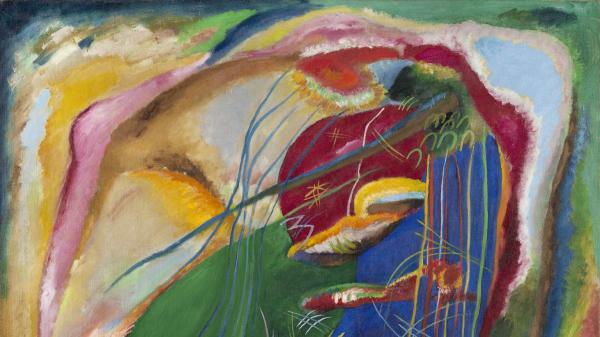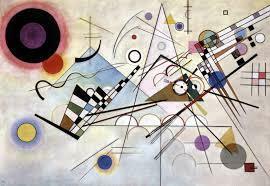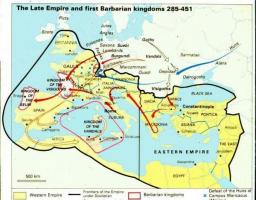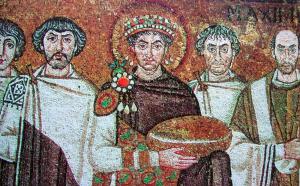Wassily KANDINSKY: Most Important Works

Wassily Kandinsky (Moscow, 1866-Neuilly-sur-Seine, 1944), known as the father of abstraction, is one of the great figures of 20th century painting. Thus, Kandinsky was the leader and founder of the expressionist group Der Blaue Reiter (The Blue Rider) With Franz marc between 1911 and 1913, providing a more mystical vision of art. And it is that, since 1910, Kandinsky had already renounced the realistic and objective representation of the world, turning to awaken emotions in the soul of the spectator. In his style, Kandinsky came to combine the abstract with influences Fauvists, Expressionists, Surrealists, in addition to also going through movements such as Neoplasticism, Constructivism and Expressionism abstract.
In this lesson from a TEACHER we show you life and most important works of Wassily Kandinsky, an essential author to know the artistic avant-gardes of the 20th century.
Index
- Wassily Kandinsky: life and work
- Johannisstrasse, Murnau, one of Kandinsky's works (1908)
- First abstract watercolor (1910)
- Painting with three spots, No. 196 (1914)
- Composition 8 (1923)
Wassily Kandinsky: life and work.
Of Russian originKandinsky, with a taste from a young man for drawing and music, studied Law and Economics at the University of Moscow, where he began teaching as soon as he graduated. In 1895 he was completely dazzled by the work of Claude Monet during a visit to an exhibition of french impressionism. That experience led him to dedicate himself entirely to painting, studying in Munich at the painter Anton Azˇbé's academy and at the Akademie der Bildenden Künste. After setting up his own art school in 1901 and organizing exhibitions, he ended up settling in Paris between 1906 and 1907.
In these years, Kandinsky has been adopting abstraction as a form of liberation of the human being from the voracity of materialism. In 1911 he founded with Franz Marc the almanac Der Blaue Reiter (The Blue Rider), a group around which various artists were organized who advocated an art that reflected the creative force of the artist. In these years he also turned to offer his artistic ideas in various writings.
After spending a few years in Moscow, Kandinsky returned to Germany to become a member of the Weimar Bauhaus, school where he was a teacher. Bauhaus art was inspired by architecture, combining balanced and abstract forms and little or no decoration. After Hitler came to power in 1933, Kandinsky moved to Paris, specifically Neuilly-sur-Seine, where he died in 1944.
Johannisstrasse, Murnau, one of Kandinsky's works (1908)
This work, an oil on cardboard, represents the street Johannisstrasse in Murnau, a German town where Kandinsky and Gabriele Münter lived since 1908, and she bought a house there in 1909.
In this representation you can see at the end of the street the inn where they were both staying, also appreciating the influence of Fauve painting in the use of intense and bright colors, locating already between the figurative Y the abstract by ordering the entire urban landscape into geometric shapes and patches of colors.
The painting is in the Museo Nacional Thyssen-Bornemisza, Madrid.

First abstract watercolor (1910)
This is another of Kandinsky's most important works of his career. In fact, Kandinsky himself dated this painting to the year 1910 in order to break with the controversy about which work or which artist presented the first abstract painting. And, although he himself considered that this title had to fall on a work of Monet's haystacks, he presented this First abstract watercolor with this title and signing it with the date 1910, although specialists date it in 1913.
In this work, Kandinsky represents his idea of express your inner world, showing how total abstraction is the best way to show it and transmit sensory and spiritual experiences. Thus, critics consider that the colors and shapes of this watercolor can be related to musical notes, turning the watercolor into something as immaterial and emotional as music. This watercolor is exhibited at the Center Pompidou, Paris.

Painting with three spots, No. 196 (1914)
This is another of Kandinsky's most important works, since it already supposes a total break with the figurative and his entry into full abstraction. A) Yes, Paint with three spots, an oil on canvas, is the work that made Kandinsky one of the forerunners of non-figurative art.
Dated in 1914, in this creation it also responds to his desire to combine music and painting and generate emotions in the viewer only with the expression of the artist's spiritual strength. The painting presents shapes and colors full of brightness and intensity, also introducing the number three with all the divine symbolism that encloses and following its line of giving a mystical and spiritual touch to creation artistic.

Composition 8 (1923)
Kandinsky continued to revolutionize the art world and awaken emotions in viewers, applying to the painting criteria of other arts and sciences, not lacking neither music nor mathematics as sources of inspiration. Is Composition 8 is one of the most emblematic works by Kandinsky and a clear example of his search to impact the viewer with a set of lines, shapes and colors arranged in an exquisite way. Its objective is to invite the viewer to discover meanings, emotions, feelings and ideas expressed by the author and everything that evokes him, thus allowing different readings. Thus, the viewer's sensitivity contributes something new and different, thus interacting with the author and the work.
Kandinsky created these compositions imitating delicate landscapes in which he uses musical equivalents, in addition to stating the importance of imagination and freedom in artistic creation in the use of Colour. A color that recalls Fauvist and Post-Impressionist influences. This painting is exhibited in the Solomon R. Guggenheim Museum, in New York.

If you want to read more articles similar to Wassily Kandinsky: Most Important Works, we recommend that you enter our category of Story.
Bibliography
- VVAA (2002). Kandinsky. Susaeta.
- Kandinsky, W (2002). Writings about art and artists. Synthesis.
- Kandinsky, W (2028). Of the spiritual in Art. Iberian Paidos.



